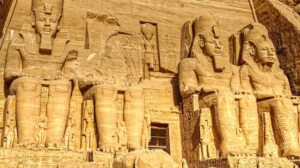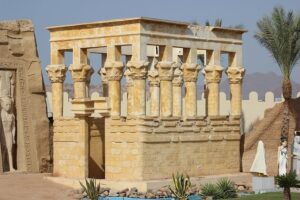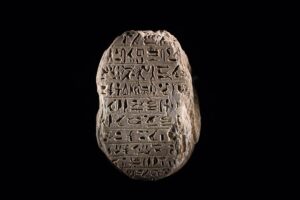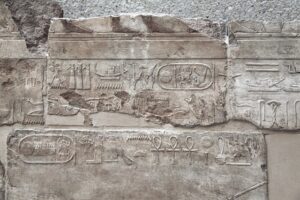
Ancient Egyptian Love Spells: Rituals and Practices
Table of Contents
Egyptian civilization is one of the most intriguing in history, renowned for its advancements in science, architecture, and spirituality. Among the many aspects of ancient Egyptian life that captivate modern imaginations is their practice of magic, especially love spells. These spells were not merely superstitious practices but were deeply rooted in their religious beliefs and worldview. In this article, we will explore the intricacies of Egyptian love magic, its rituals, tools, and historical significance.
The foundation of Egyptian Magic
Magic in ancient egyptian society
Magic, or heka, was an integral part of daily life in ancient Egypt. It was not viewed as supernatural but as a natural force given by the gods to help maintain the cosmic order (maat). Heka was considered a divine gift, and practitioners of magic included priests, scribes, and healers.
Role of love spells in egyptian magic
Love spells were a prominent aspect of Egyptian magic, aimed at fostering affection, desire, and loyalty. These spells were not always about romantic love; they could also be used to strengthen familial bonds or ensure devotion among friends. The Egyptians believed love magic could influence both human hearts and divine will, invoking the power of gods like Hathor (goddess of love and beauty) and Isis (goddess of magic and motherhood).

Key elements of egyptian love spells
The Role of Deities in Love Magic
- Hathor: Revered as the goddess of love, beauty, and fertility, Hathor was often invoked in love spells. Her temples were centers of worship and ritual magic.
- Isis: As a powerful sorceress, Isis was believed to possess the ability to influence emotions and reconcile lovers.
- Bes: The god of fertility and household joy, Bes, was sometimes called upon to protect relationships and ensure harmony.
Tools and ingredients
Egyptian love spells relied on a variety of tools and ingredients, each chosen for their symbolic and magical properties:
- Amulets and talismans: These often depicted deities or symbols like the ankh (life) or the djed (stability), and were believed to channel divine energy.
- Papyrus scrolls: Spells were written on papyrus using hieratic or demotic scripts, sometimes accompanied by illustrations of gods or magical symbols.
- Natural ingredients: Honey, lotus flowers, and certain herbs were used to prepare love potions or ointments.
- Figurines: Clay or wax figurines representing the target of the spell were used in rituals, often inscribed with magical texts.

Ritual practices in love spells
Incantations and prayers
Central to any love spell was the recitation of incantations. These were often poetic appeals to the gods, calling upon their power to fulfill the caster’s desires. The language was rich with imagery and symbolism, aimed at invoking an emotional and spiritual response.
Symbolic actions
Rituals frequently involved symbolic actions such as:
- Burning offerings: To release energy and carry prayers to the heavens.
- Binding rituals: Using cords or threads to symbolize the unbreakable bond between two people.
- Anointing with oils: Specially prepared oils were used to anoint amulets or the caster themselves to draw love and attraction.
Timing and astrology
Egyptians paid close attention to celestial events. Rituals were often timed to coincide with phases of the moon, solstices, or festivals dedicated to love deities.

Historical evidence of love magic
Texts and inscriptions
Numerous papyri have been discovered that detail the practice of love magic. The Cairo Love Spell Papyrus and the British Museum Papyrus contain explicit instructions for casting love spells, including the materials needed and the precise wording of incantations.
Archaeological finds
Artifacts such as inscribed amulets, figurines, and ceremonial objects offer tangible evidence of the importance of love magic. These items are often found in tombs, suggesting their role in both life and the afterlife.
Case study: The Demotic Love Spell
One notable example of love magic is a Demotic papyrus from the Greco-Roman period. It contains a spell intended to ignite passion in a woman, involving the burning of a specific plant and the recitation of a hymn to Hathor.

Ethics and Consequences of Love Magic
Moral considerations
While love spells were popular, they were not without ethical concerns. Some spells aimed to coerce or dominate, raising questions about consent and moral boundaries. Ancient Egyptians were aware of these issues, and some texts caution against the misuse of magic, warning of divine retribution.
Curses and counter-spells
If love magic was suspected of causing harm, counter-spells or protective rituals could be performed. These were designed to neutralize the effects of the spell and restore harmony.
FAQs on Egyptian Love Spells
Q1: Were love spells accessible to everyone in ancient Egypt?
Yes, love spells were practiced by individuals from all social classes. While priests and magicians often performed complex rituals, simpler spells could be cast by common people using readily available materials.
Q2: Did Egyptians believe in the effectiveness of love spells?
Absolutely. The Egyptians had a profound belief in the power of heka and its ability to influence the physical and spiritual realms. This confidence was reinforced by the integration of magic into their religious and social systems.
Q3: Are Egyptian love spells still practiced today?
Modern practitioners of magic and mysticism sometimes draw inspiration from ancient Egyptian rituals. However, these contemporary practices often blend Egyptian elements with other traditions.
Q4: Can Egyptian love spells backfire?
According to ancient beliefs, misusing love spells could indeed result in negative consequences. It was thought that offending the gods or disrupting cosmic balance could bring misfortune.
Q5: How did Egyptians ensure the success of a love spell?
Success was believed to depend on the caster’s purity, faith, and adherence to ritual instructions. Offering gifts to deities and maintaining a harmonious relationship with the divine were also considered crucial.

Conclusion
Egyptian love spells offer a fascinating glimpse into the ancient world’s understanding of love, magic, and the interconnectedness of all things. Through their sophisticated rituals and deep spiritual insights, the Egyptians sought to influence the heart and mind, forging bonds that transcended mere human connection.
Bibliography
- Pinch, Geraldine. Magic in Ancient Egypt. University of Texas Press, 1994.
- Ritner, Robert K. The Mechanics of Ancient Egyptian Magical Practice. The Oriental Institute of the University of Chicago, 1993.
- Wilkinson, Richard H. The Complete Gods and Goddesses of Ancient Egypt. Thames & Hudson, 2003.
- Jacq, Christian. Magic and Mystery in Ancient Egypt. Souvenir Press, 1998.
- Budge, E.A. Wallis. Egyptian Magic. Dover Publications, 1971.




